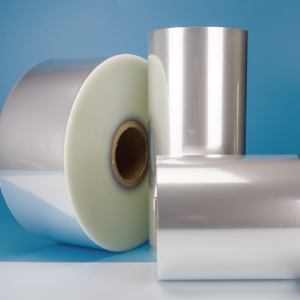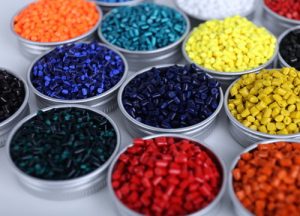What is PE wax?1
PE wax (Polyethylene wax) is one of the essential additives in the molding and processing of polyvinyl chloride. Its main function is to improve fluidity and demolding during rubber and plastic processing, prevent adhesion inside the machine or mold, and prevent defects such as fish eyes, very rough surface, lack of luster, or formation of flow patterns in the product.

There are many types of plastic lubricants, and PE wax is one of the hydrocarbons used as a lubricant. PE wax, also known as low molecular weight polyethylene, is a low molecular weight byproduct during the production of polyethylene resin or obtained from ethylene polymerization. It can be used as a lubricant for plastics and rubber such as polyvinyl chloride, and its internal lubrication effect is stronger compared to other hydrocarbon lubricants. The product is suitable for extrusion and rolling processing, which can improve processing efficiency, prevent film or sheet adhesion, and optimize the dispersion of fillers or pigments, but its transparency and compatibility are poor. In addition, PE wax can be used for products that come into contact with food.
PE wax is a synthetic polyolefin wax that appears as a white or pale yellow solid in the form of blocks, flakes, or powders. PE wax has the advantages of low toxicity, high softening point, low melt viscosity, wear resistance, heat resistance, as well as good lubricity, dispersibility, and flowability. PE wax, as a lubricant for PVC, can effectively optimize the processing efficiency of pipes, profiles, films, cables, and other plastics and rubbers, and has a good demolding effect.
PE wax products belong to fine chemical products. In the industry, low molecular weight PE wax used in industries such as petroleum, chemical, light industry, textile, and papermaking has always been in short supply. But in the masterbatch market, PE wax has a large application market.

The production process of PE wax used in the masterbatch market mainly includes the following three types:

A-Aggregation type:
Low molecular weight PE wax produced by polymerization technology. Some foreign companies, represented by Honeywell, are the main suppliers. Due to a series of excellent properties such as narrow molecular weight distribution and stable quality, it occupies the high-end market of coloring masterbatch. Multinational corporations in China often use polymer wax or imported wax in their masterbatch enterprises and core enterprises in the industry.
B – Cracking type:
Cracking finished polyethylene into low molecular weight polyethylene. At present, there are a few companies in the industry that produce this type of PE wax, but due to its high price, it has been impacted in terms of market share.
C-byproduct type:
Low molecular weight PE wax refined and produced from polymer by-products from Daqing, Yangtze, and Yanshan. Its price is low and it is generally used for low-end masterbatch products.
China has become one of the countries in Asia that produces and demands large color masterbatch, and will become a major demand market in the world in the future, with rapid growth in demand. Correspondingly, the demand for PE wax as a color masterbatch dispersant will also increase.
How to distinguish PE wax?
PE wax is low molecular weight polyethylene. Its characteristic is a high softening point (above 100 ℃), close to high molecular weight polyethylene, while its melt viscosity and hardness are close to white wax. As a smoothing agent, its chemical properties are stable and its functions are outstanding. PE wax has good compatibility with PE, PP, polyethylene terephthalate, ethylene propylene rubber, and butyl rubber. Can improve the flowability of polyethylene, polypropylene, ABS, and the demolding properties of polymethyl methacrylate and polycarbonate.
Compared with other external smoothing agents, PE wax has a stronger internal smoothing effect. In addition, it can also be used for ink, paper, concentrated masterbatch, biodegradable masterbatch, plastic film, candles, etc. It can also be used for paints, hot melt adhesives, adhesives, etc.
Authentic PE wax can provide functions such as lubrication, dispersion, demolding, brightening, anti-wear, scratch resistance, pollution resistance, adhesion resistance, anti-static, anti-oxidation, and oil-water resistance within its usage territory. Many customers have reported that they have imported fake PE wax, which not only affects the quality of the product and affects the production plan, but also results in buying counterfeit goods at a high price.
Below are several methods to distinguish the authenticity of PE wax.
(1) Some or all of the fake PE wax is white wax, stearic acid, calcium carbonate, etc. Based on years of experience in plastic additives, several methods for determining the authenticity of flake PE wax have been summarized.
1、 Sheet shaped PE wax: Genuine sheet shaped wax looks like plastic, almost no different from plastic sheets, with a smooth surface, semi transparent, large white or slightly yellow color, no layering when unfolded, no impurities such as lime powder or black spots, and good brightness when reflected by light on one side; Fake products appear dark brown or mottled, with a rough and greasy surface.
2、 Touching it with your hands, genuine products have good lubricity and feel like plastic instead of wax. They are hard, brittle, fragile, and do not clump at room temperature. Fake products containing white wax are greasy, oily to the touch, have a feeling of touching candles, or rough, looking like uncoordinated dough pieces, soft, and if held by hand, they will clump together;
3、 The genuine product smells like plastic, while the counterfeit product has the smell of white wax or a strong odor;
4、 Heat the wax sheet in a glass container until water boils for 5 minutes. If the shape of the wax sheet remains unchanged, it is a genuine product. If it becomes burnt or deformed, it contains impurities such as white wax;
5、 Of course, the testing methods and environments are different, but the softening point of the genuine product must be higher than 100 degrees Celsius;
6、 Make a small sample or pilot test in actual production as a measure of effectiveness and product quality.
(2) It is recommended to use larger round particles for microbead shaped PE wax particles, so that the transparency can be easily observed to prevent product counterfeiting. Genuine products are transparent upon closer inspection, while counterfeit products are not transparent and cannot be enlarged due to the addition of impurities such as lime powder. More importantly, never buy powdered ones, as they often contain impurities such as calcium carbonate, white wax, or stearic acid. Also pay attention to the price, if it is significantly lower, be sure not to be fooled.
Usually, the first three methods can actually determine the truth or falsehood, and at most, the fourth step can completely determine the truth or falsehood. Trust your own eyes, hands, and nose, you can buy genuine polyethylene wax and make good products with confidence.
#PE Wax # PE Wax FLAKE # PVC # PP # PE # ABS # Ethylene Propylene Rubber # Pipe # Film # Profile # Wire and Cable # Polymethyl Methacrylate # Polycarbonate # Color Masterbatch # Ink # Paper # Film # Candle # Hot Melt Adhesive # Adhesive




